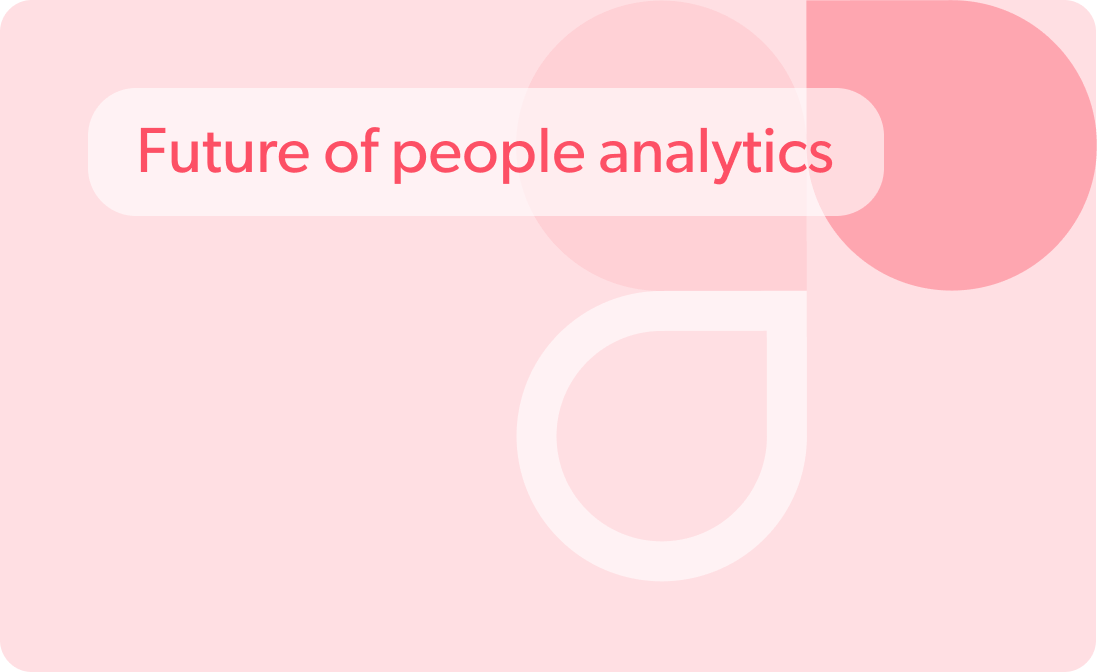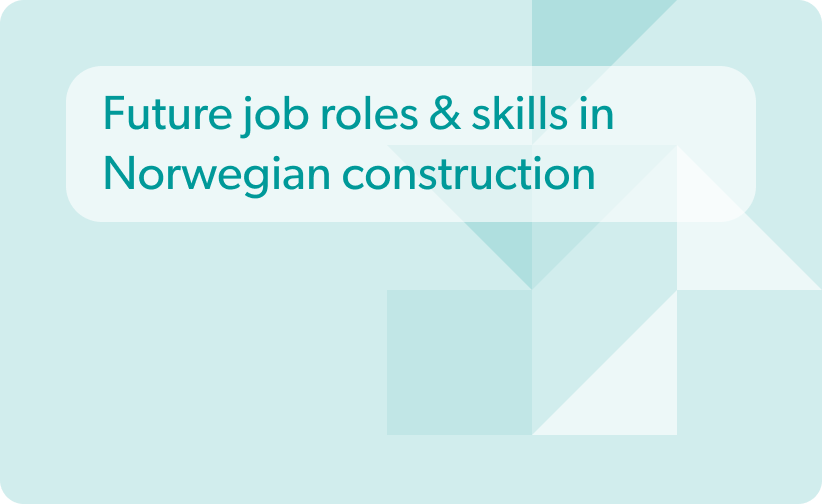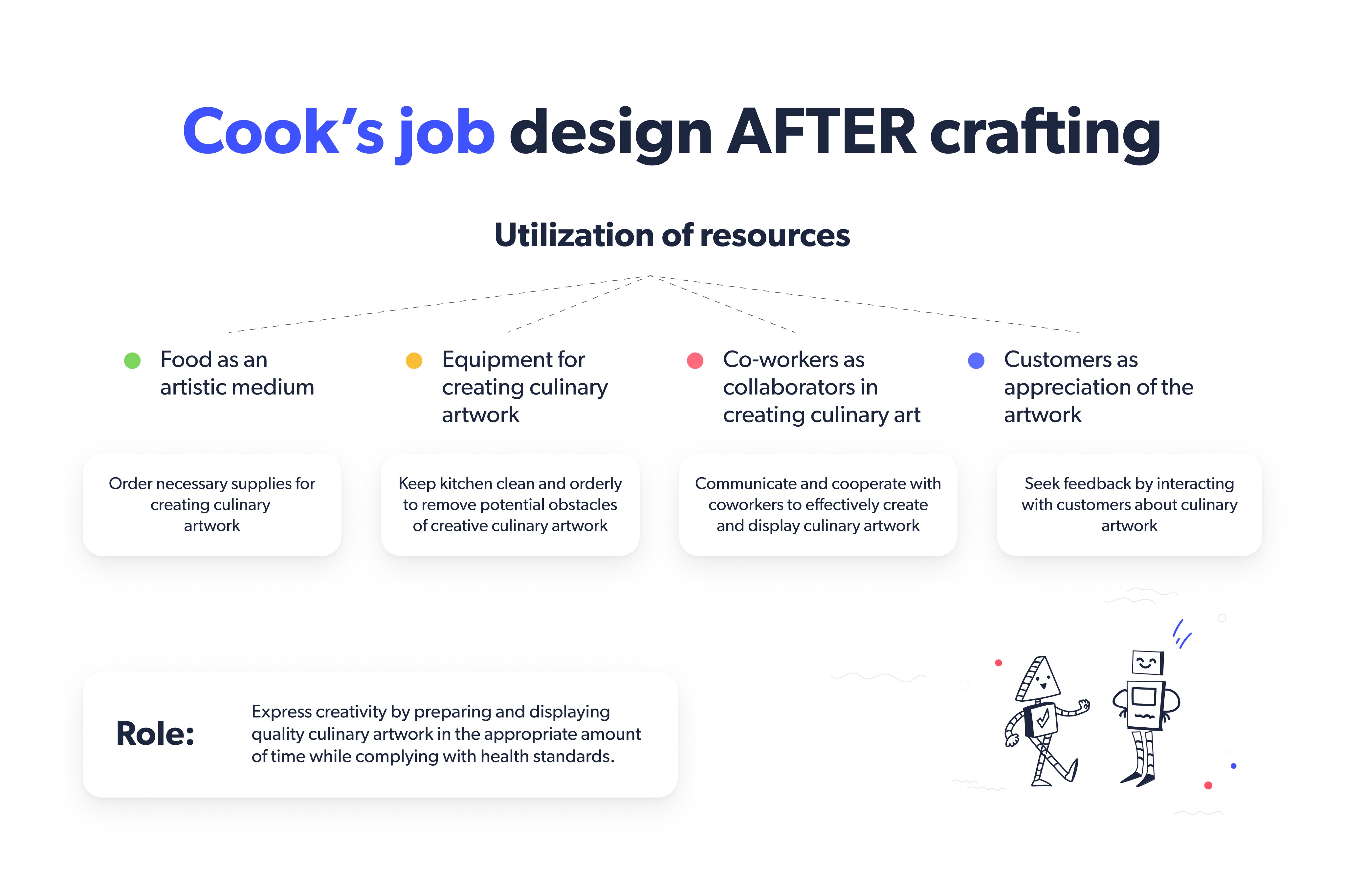Job Crafting: Everything you need to know and how companies can benefit
Table of contents
Have you ever personalized your workspace with photos, plants, or other items that help create a more positive and engaging work environment?
Do you often try to find more efficient ways to complete tasks or improve processes, even if it goes beyond your job description?
Do you naturally build relationships with colleagues, managers, and customers that can lead to more enjoyable work experiences and open up new opportunities?
If you answered yes to any of the above questions, you are job crafting without knowing it!
What is job crafting?
Amy Wrzesniewski, Jane Dutton, and Justin Berg, in their seminal 2010 paper “Job Crafting and Meaningful Work,” introduced the term job crafting and defined it as “the physical and cognitive changes individuals make in the task or relational boundaries of their work.”
This definition emphasizes that job crafting involves modifying the tasks and relationships with others and how individuals think about their roles. It highlights the active participation of employees in shaping their work experience to align with their strengths, passions, and values.
Job crafting allows employees to align their work experiences with their strengths, interests, and personal values, resulting in increased job satisfaction, engagement, and motivation to perform well. By providing opportunities for job crafting, organizations can improve employee productivity, reduce turnover rates and recruitment costs, and enhance their employer brand.
Job crafting examples, and how job crafting improves employee engagement and satisfaction
Berg, Dutton, and Wrzesniewski’s cook job design illustrates how job crafting can improve an employee’s job satisfaction and engagement. Before job crafting, the cook’s job was focused on completing repetitive and monotonous tasks, such as chopping vegetables and preparing ingredients. In addition, the cook was assigned to a specific station and had limited autonomy and control over their work.
After applying job crafting techniques, the cook’s job was redesigned to provide more opportunities for creativity and autonomy. For example, the cook was free to experiment with different flavor combinations and cooking techniques and was encouraged to create new dishes and recipes. The cook was also given more control over their work schedule, allowing them to work during the hours when they felt most productive.
As a result of job crafting, the cook felt more engaged and motivated in their work. They felt greater ownership and control over their job and could express their creativity and passion for cooking. This increased job satisfaction and engagement not only improved the cook’s well-being but also positively impacted the overall quality of the food and the dining experience for guests. This example demonstrates how job crafting can transform a job from a mundane and unsatisfying experience to a fulfilling and rewarding one.
Let’s explore job crafting models and explain how HR leaders can use them to create a more fulfilling and rewarding work experience for employees. An employee who has a fulfilling work experience is like a superhero with a power boost, and we all know what superheroes can do for an organization — they can save the day! If you want your organization to be as successful as the Avengers, try the following job crafting methods to keep your employees happy and fulfilled in their work!
Task crafting
Task crafting involves modifying the tasks an employee performs to better align with the employee’s strengths and interests. For example, an accountant who enjoys problem-solving can be upskilled to take on more analytical tasks that involve data analysis and forecasting. Similarly, a marketing executive who enjoys writing can be provided training on content creation tasks such as writing blog articles, social media posts, and ad copy.
Empower your team with upskilling
Unlock the full potential of your workforce with upskilling! Download our free infographic and discover the many benefits of investing in your team’s skills.
Relationship crafting
Relationship crafting involves modifying relationships at work to better align with employees’ needs and preferences. For example, HR leaders can help employees seek mentorship with senior leaders who can provide guidance and support in career development. By building positive relationships and seeking out mentorship, employees can develop a strong support system that can help them grow and thrive in their jobs.
Cognitive crafting
Cognitive crafting involves modifying how employees perceive their job to better align with their values and goals. For example, if employees feel unfulfilled in their work, HR leaders may reframe their job responsibilities to focus on their impact on clients or customers. Similarly, if employees feel demotivated by a job’s mundane aspects, HR leaders can help them focus on the bigger picture and their contribution to the company’s goals.
Time crafting
Time crafting involves modifying how employees use their time on the job to better align with their priorities and goals. For example, employees who struggle with time management can be trained to use time-blocking techniques to schedule specific time for tasks and prioritize the most important tasks first. Similarly, employees who feel overwhelmed by their workload may be provided help through delegation of specific tasks to others or through the use of automation tools to streamline their workflow.
Energy crafting
Energy crafting involves modifying how employees use their energy at work to better align with their needs and preferences. For example, easily distracted employees may work quietly or wear noise-canceling headphones to create a more focused work environment. Similarly, employees who feel drained by long work hours should be allowed to take breaks throughout the day to recharge, such as by walking or practicing mindfulness techniques.
Identity crafting
Identity crafting involves modifying how employees see themselves in their job to better align the job with their values and passions. For example, employees who value creativity could be provided with opportunities to incorporate their creative skills into their job, such as by suggesting new design ideas for a project. Similarly, employees who are passionate about helping others could be given opportunities to mentor or support their colleagues.
The power of upskilling, reskilling, and cross-skilling in job crafting
Upskilling, reskilling, and cross-skilling opportunities are crucial components of job crafting because they allow employees to develop new skills and take on new challenges within their roles. This not only helps employees to stay engaged and motivated in their work but also enables them to enhance their job satisfaction and overall well-being.
By upskilling, employees can acquire new skills that enable them to perform their existing job responsibilities more effectively or take on additional responsibilities. This not only benefits employees by providing them with a sense of accomplishment but also benefits the organization by increasing productivity and efficiency.
Reskilling allows employees to transition into new roles or take on new responsibilities within their current roles. This can be especially important in industries that are rapidly changing or in positions that require keeping up with the latest technological advancements. By providing reskilling opportunities, employers can retain valuable employees and ensure they remain competitive in the marketplace.
Cross-skilling allows employees to gain experience in different areas of the organization. This can help employees broaden their skillset and better understand the organization as a whole. It also provides employers with a more versatile workforce that can adapt to changing needs and business demands.
At HRForecast, we understand the importance of upskilling, reskilling, and cross-skilling in job crafting. Our team of experts can help you identify the skills gaps in your organization and develop customized solutions to bridge them. Contact us to learn how we can help you take your team to the next level.
Stay up to date with our newsletter
Every month, we’ll send you a curated newsletter with our updates and the latest industry news.





























 info@hrforecast.de
info@hrforecast.de
 +49 89 215384810
+49 89 215384810






